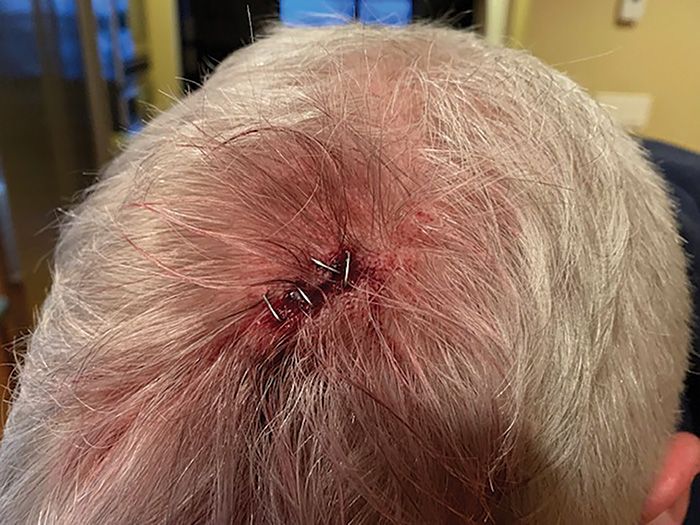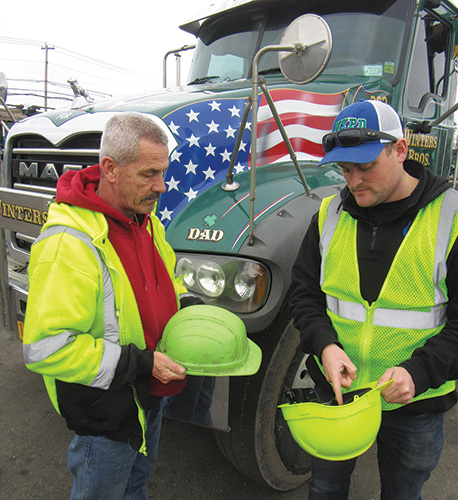According to the Brain Trauma Foundation, about 2.5 million people sustain a traumatic brain injury each year in the U.S. Head protection, including wearing a hard hat, and safety training can reduce the risk of head injury.
By Will Flower
The brain is the most complex organ in the human body. It serves as the center of the nervous system and governs the body’s other organs. The brain coordinates movement, controls thought, memory, emotion, breathing, and behavior.
Given the critical function of the brain, it is essential to protect the brain from injury. The body itself provides some protection including a layer of protective fluid that surrounds the brain and helps cushion it from injury. The skull forms a dome cavity inside of which the brain grows, develops, and functions while being shielded from injury.

Head Injuries
Injuries to the head can be serious and severe trauma to the head can result in death. In fact, Traumatic Brain Injury (TBI) is a leading cause of death and disability among children and adults. TBI can occur when you bang your head into something, or an
object strikes your head. Protecting the head and the brain requires more than just a good sense of your surroundings. Workers will also benefit from head protection including hard hats and safety glasses.
OSHA mandates specific requirements for head protection in the workplace and states that employers are responsible to ensure that workers wear proper head protection at industrial and construction sites (See References section: 29 CFR 1910.135 and 29 CFR 1926.100).

Reducing Risk
However, protecting employees against head injuries requires more than just issuing hard hats. The following are steps to take to reduce the risk of head injuries at your workplace.
- Identify and remove potential hazards: Safety professionals and operation managers should review the worksite with a goal of identifying and removing threats to worker safety. Make sure there is adequate height for workers to move through the facility. Look for low hanging pipes, wires, and obstructions where employees may strike their head. Examine the risk of falling objects and, if necessary, install shielding to protect workers below.
- Provide proper PPE: Hard hats and safety glasses usually go together. Visors and ear protection may also be needed. If workers are outside, consider a full brim hard hat that can provide an extra margin of protection from the sun, as well as falling objects.
- Make the right choice: Price is not the only consideration for selecting hard hats. Hard hats and safety helmets can differ depending on the type and level of protection needed. Managers should research the various types of hard hats and select a hard hat that is appropriate to protect workers.
- Make sure the hard hat is a good fit: Remember that employees are less likely to wear a hard hat if it is uncomfortable. Hard hats are produced in a variety of designs to fit a range of head shapes and sizes. Employers should ensure each employee gets a good fitting hard hat. The hard hat should be snug so that it does not slip or fall off. Most hard hats have an adjustable strap or ratchet suspensions to adjust for a perfect fit.
- Train employees: All employees should be trained on the proper use of helmets, hard hats, and head protection. Managers and safety professionals should explain the importance of head protection and review the hard hat manufacturer’s instructions for use. Drivers should be reminded that it is important to wear hard hats while making roll-off deliveries at construction sites.
- Inspect hard hats: Employees should inspect their hard hats at the start of each shift. Examine the outside of the hard hat to make sure there are no cuts or cracks in the shell of the hard hat. Look at the strap and the harness inside the hard hat to ensure they are not overly worn and there is no fraying. Make sure the harness suspension provides the proper clearance between your head and hard hat—you will want at least 1 inch of clearance. If your hard hat hits something or is dropped, employees should take a minute to re-inspect their hard hat to ensure it did not crack. Hard hats that are showing excessive wear or are broken should be replaced.
- Company inspection of PPE: It is a good practice for a manager to regularly conduct a thorough review of hard hats and other PPE to ensure the items are in good working condition and capable of protecting the workers using the items.
- Keep hard hats clean: Hard hats should be kept clean. Dirty hard hats can impede worker visibility. Clean hats allow for easy inspection for cracks and chips. Follow the manufacturer’s recommendations for cleaning. Generally, a mild detergent and warm water is sufficient, followed by rinsing in clear water.
Shielding Heads
The right head protection will help shield employees from head injuries providing the hard hat is properly selected, maintained, and is on the worker’s head. Wearing a hard hat can save a life! | WA
Will Flower is the Senior Vice President of Corporate and Public Affairs at Winters Bros. Waste Systems.
Share your safety tip. Submit your suggestions to Will Flower at [email protected].
References
• www.osha.gov/laws-regs/regulations/standardnumber/1910/1910.135
• www.osha.gov/laws-regs/regulations/standardnumber/1926/1926.100
